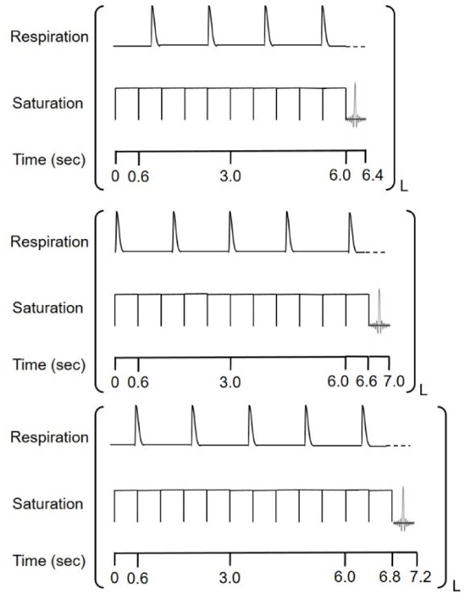Figure 1.

Respiration gated CEST pulse sequence. A fixed set of 10 rectangular pulses, each 600 milliseconds long, was used before each acquisition to ensure that CEST steady state had been reached. If the trigger was active (300–600 milliseconds after a respiration) as is the case for the top figure, FISP acquisition would immediately occur. If the trigger was not active, as is the case for the bottom two figures, another 600 millisecond rectangular pulse would start and then again there would be a check to determine if the trigger was active. This sequence setup ensured there was no gap in between the end of the CEST pulse and the beginning of FISP acquisition. An active trigger is indicated with a dash line for respiration and L indicates the offset frequency for the CEST pulse. This sequence would be repeated for multiple offsets to generate a CEST spectrum.
